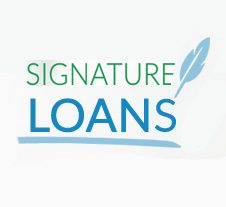Table of Contents
Introduction to Credit Card Debt
Credit card debt is a prevalent financial issue impacting millions worldwide. It emerges when individuals opt for purchases on credit, committing to repay the card issuer at a later date. However, this convenience often comes at a cost, with accumulating interest and minimal payments prolonging the debt cycle.

Understanding Credit Card Debt
Interest Rates: The Silent Culprit
Interest rates, expressed as APR, wield significant influence over credit card balances. Unlike other forms of credit, credit card APRs can skyrocket, especially for those with less favorable credit scores.
The debtor’s creditworthiness heavily influences the APR, making it crucial to maintain a positive credit profile.
Minimum Payments: The Debt Spiral
Credit card companies require minimum monthly payments, often covering only a fraction of the outstanding balance.
While this may seem manageable, it perpetuates prolonged debt and bolsters the card issuer’s profits through accrued interest.
Individuals may find themselves trapped in a cycle of debt, struggling to make meaningful progress towards repayment.
Fees: The Hidden Costs
Various fees lurk in the shadows of credit card debt, compounding the financial burden on debtors.
From late payment charges to annual fees, these fees chip away at financial stability and exacerbate the debt dilemma. Understanding and managing these fees is essential for effective debt management and financial planning.
Credit Limit: The Balancing Act
The credit limit acts as a double-edged sword, dictating the maximum balance a debtor can carry.
Exceeding this limit triggers additional fees, adding insult to injury. Determined by the card issuer, it’s a reflection of the debtor’s financial health and creditworthiness.
Staying within the credit limit is crucial to avoid unnecessary fees and maintain a positive credit standing.
The Psychological Impact of Debt: Navigating the Emotional Terrain
Credit card debt isn’t just a financial burden; it takes a toll on mental well-being too. The stress of mounting debt can lead to anxiety, depression, and a host of other psychological issues. Individuals may find themselves overwhelmed by feelings of guilt, shame, and hopelessness.
Stress and Anxiety: The Silent Struggles
Constant worries about meeting payment deadlines and managing escalating interest rates fuel chronic stress and anxiety.
Sleepless nights, mood swings, and difficulty concentrating become commonplace, affecting overall quality of life.
The psychological toll of debt can permeate every aspect of an individual’s life, impacting relationships, work performance, and overall happiness.
Impact on Relationships: Weathering the Storm Together
Debt doesn’t just affect individuals; it strains relationships too. Financial disputes often arise, leading to decreased trust, increased tension, and even separation or divorce in extreme cases.
Open communication and mutual support are essential for navigating the challenges of debt as a couple or family.
Cognitive Effects: The Fog of Debt
The mental burden of debt takes a toll on cognitive functions, impairing decision-making abilities, reducing workplace productivity, and hindering memory recall.
Individuals may find themselves struggling to focus on tasks, make sound financial decisions, or retain information.
This cognitive fog can exacerbate feelings of stress and anxiety, further complicating the debt repayment process.
Assessing Your Current Financial Situation: Charting a Course for Success
Before starting your journey to debt freedom, it’s crucial to assess one’s current financial standing.
This involves a comprehensive evaluation of income, expenses, assets, and liabilities. Understanding where you stand financially provides a solid foundation for creating a strategy to tackle debt effectively.
Income Analysis: Building a Solid Foundation
Identify all sources of income, from primary wages to secondary streams like freelance work or investments.
Understanding your total income allows you to set realistic goals and allocate funds strategically.
Expense Categorization: Knowing Where Your Money Goes
Categorize expenses into fixed, variable, and discretionary categories to gain insight into spending habits.
Tracking your expenses helps identify areas where you can cut back and allocate more funds towards debt repayment.
Asset Inventory: Knowing What You Own
Take stock of liquid assets, long-term investments, and personal property to understand overall financial health. Your assets provide a safety net during financial emergencies and may offer opportunities for debt consolidation or repayment.
Liabilities Examination: Facing the Numbers
Identify short-term and long-term debts, including credit card balances and loans, to gauge the extent of financial obligations.
Understanding your liabilities helps prioritize debt repayment and develop a plan to become debt-free.
Setting Realistic Financial Goals: Paving the Path to Financial Freedom
Armed with a clear understanding of their financial situation, individuals can set realistic goals to guide their journey toward debt repayment and financial stability. Setting specific, measurable, achievable, relevant, and time-bound goals ensures clarity and focus.
Identify Priorities: What Matters Most?
Determine immediate, short-term, and long-term priorities to focus efforts effectively. Whether it’s paying off high-interest debt, building an emergency fund, or saving for retirement, prioritize goals based on their importance and urgency.
SMART Goals: Setting the Stage for Success
Craft Specific, Measurable, Achievable, Relevant, and Time-bound (SMART) goals to ensure clarity and feasibility.
SMART goals provide a roadmap for success and keep you motivated throughout the debt repayment process.
Budget Creation: Making Every Dollar Count
Allocate income towards necessities, discretionary spending, savings, and debt repayment to maximize financial resources.
Creating a budget helps track spending, identify areas for improvement, and stay on track with financial goals.
Emergency Fund: Expecting the Unexpected
Establish an emergency fund to cover unforeseen expenses and prevent reliance on credit during emergencies.
Having a financial safety net provides peace of mind and reduces the risk of falling back into debt.
Strategies for Debt Reduction: Choosing Your Weapon Wisely
With goals in place, it’s time to implement strategies for debt reduction, leveraging methods like the Snowball or Avalanche approach.
These debt repayment strategies offer different approaches to tackling debt and help individuals stay focused and motivated.
Snowball vs. Avalanche Method: Finding Your Fighting Style
Choose between paying off smallest debts first for quick wins (Snowball) or tackling high-interest debts to minimize overall interest payments (Avalanche).
The Snowball method provides psychological momentum, while the Avalanche method offers financial efficiency.
Regular Tracking and Adjustments: Staying the Course
Monitor financial progress regularly and adjust strategies as needed to stay on track with debt repayment goals.
Regular tracking helps identify areas for improvement and celebrate milestones along the way.
Negotiation with Creditors: Seeking a Win-Win
Engage with creditors to negotiate lower interest rates or more favorable payment terms to expedite debt repayment.
Many creditors are willing to work with individuals facing financial hardship and may offer assistance programs or debt settlement options.
Automate Payments and Savings: Making Success Routine
Automate monthly payments and savings contributions to ensure consistency and minimize the risk of missed payments.
Automatic payments reduce the chance of late fees and help individuals stay disciplined with their financial commitments.
Psychological Considerations: Nurturing Your Mental Well-being
Navigating the psychological challenges of debt requires a proactive approach to maintain mental well-being. By prioritizing self-care and adopting coping strategies, individuals can better manage stress and maintain a positive outlook throughout their debt repayment journey.
Practice Stress-reduction Techniques
Engage in activities such as meditation, deep breathing exercises, or yoga to alleviate stress and promote relaxation.
Taking regular breaks and engaging in hobbies or activities you enjoy can also provide much-needed relief from financial worries.
Maintain a Positive Outlook
Focus on the progress made towards debt repayment goals and cultivate optimism about the future.
Celebrate small victories along the way to stay motivated.
Remember that overcoming debt is a journey, and staying hopeful and determined can help you navigate challenges more effectively.
Utilizing Signature Loans for Swift Relief
When seeking rapid relief from credit card debt, signature loans emerge as a swift and accessible solution. Unlike balance transfers, which require searching for suitable cards and completing applications, signature loans offer a streamlined process. This immediacy makes signature loans an attractive option for individuals eager to take decisive action against mounting debt.
Key Advantages of Signature Loans
Speedy Application Process: With signature loans, applicants can bypass the time-consuming search for balance transfer cards and swiftly initiate the consolidation process. The ability to apply directly on this website enhances convenience and expedites debt relief.
Immediate Access to Funds: Upon approval, borrowers gain immediate access to the loan amount, enabling prompt settlement of high-interest credit card balances. This rapid infusion of funds empowers individuals to take control of their finances without delay.
Flexible Use of Funds: Signature loans offer versatility in fund utilization, allowing borrowers to consolidate credit card debt, cover unexpected expenses, or pursue other financial objectives. This flexibility enhances financial agility and empowers borrowers to address pressing needs efficiently.
Considerations Before Applying
Transparent Terms and Conditions: Prior to applying for a signature loan, borrowers should review the terms and conditions carefully, ensuring full comprehension of interest rates, repayment terms, and any associated fees. Transparent disclosure fosters informed decision-making and promotes responsible borrowing practices.
Budget Alignment: Assessing the loan amount and repayment terms in relation to personal financial goals is essential. Aligning the loan with one’s budgetary constraints ensures comfortable repayment and mitigates the risk of financial strain.
Credit Profile Evaluation: While signature loans may offer expedited relief, lenders evaluate applicants’ creditworthiness based on factors such as credit history, income, and debt obligations. Understanding one’s credit profile facilitates realistic expectations and enhances the likelihood of approval.
Leveraging Balance Transfers for Strategic Debt Management
In tandem with signature loans, balance transfers present a strategic opportunity for managing credit card debt efficiently.
Although the application process may entail additional steps, balance transfers offer compelling benefits, particularly for individuals seeking short-term savings and consolidation.
Advantages of Balance Transfers
Cost-Effective Debt Consolidation: Balance transfers enable individuals to consolidate multiple credit card balances onto a single card with a lower interest rate or promotional APR offer. This consolidation streamlines monthly payments and reduces overall interest costs, facilitating debt management.
Promotional APR Benefits: Many balance transfer cards feature promotional periods with 0% APR for a specified duration, allowing cardholders to save on interest charges during the introductory period. This temporary relief offers immediate financial respite and accelerates debt repayment.
Enhanced Financial Flexibility: By consolidating debt onto a single card, individuals simplify their financial obligations and gain greater control over repayment strategies. This enhanced flexibility empowers borrowers to allocate funds strategically and optimize debt reduction efforts.
Considerations Before Initiating a Balance Transfer
Comparison Shopping: Assessing various balance transfer offers enables borrowers to identify cards with favorable terms and promotional incentives. Comparing factors such as introductory APR duration, balance transfer fees, and post-promotional APR rates informs prudent decision-making.
Repayment Strategy Alignment: Developing a comprehensive repayment strategy is paramount to maximizing the benefits of a balance transfer. Establishing a realistic timeline for debt elimination and adhering to disciplined payment practices safeguards against accruing additional debt.
Credit Utilization Management: While balance transfers offer immediate savings, borrowers should monitor credit utilization ratios to safeguard credit scores. Maintaining prudent credit utilization and timely payment habits mitigates the risk of adverse credit impacts.

Conclusion: Navigating the Path to Financial Freedom
In credit card debt management, informed decision-making is crucial.
This guide explored strategic approaches like credit card balance transfers and signature loans to tackle debt. Understanding your financial situation is key to making informed choices.
With knowledge of your debts and credit standing, you can work towards financial stability. Balance transfers help minimize interest costs through promotional APR periods and structured repayment strategies, offering immediate relief and a clear path to debt reduction.
Signature loans, with their quick application process and immediate funds, provide a swift solution for debt consolidation, easily accessible through our website.
By understanding both methods, you can tailor your debt management strategy to your needs and goals. Every step towards financial freedom, no matter how small, counts.
Use the insights from this guide to practice prudent financial habits, paving the way for financial resilience and prosperity. With dedication, discipline, and informed decisions, financial freedom is within reach.
FAQs
What is the average American debt?
As of the latest data, the average American household debt, which includes mortgages, credit cards, auto loans, student loans, and other types of debt, is around $96,371. Specifically, the average credit card debt per household is approximately $5,315.
Is it stressful to have a credit card debt?
Yes, having credit card debt can be very stressful. Financial stress is a common issue and can lead to anxiety, depression, and other health problems. The constant worry about meeting payment deadlines, accruing interest, and the impact on credit scores can contribute significantly to stress levels.
How much credit card debt is too much?
Credit card debt becomes “too much” when it affects your ability to meet other financial obligations or leads to significant financial stress. A general guideline is to keep your credit utilization ratio below 30% of your available credit limit. If your debt exceeds this threshold, it may be considered too much.
How can I legally get rid of credit card debt?
There are several legal ways to eliminate credit card debt. One option is debt consolidation, which involves combining multiple debts into a single loan with a lower interest rate. Another method is a balance transfer, where debt is moved to a credit card with a lower interest rate. Debt settlement is also an option, which entails negotiating with creditors to pay a lump sum that is less than the full amount owed. Additionally, working with a credit counselor to create a debt management plan can be effective. As a last resort, filing for bankruptcy can discharge some or all of your debts.
Will unpaid credit card debt be written off?
Unpaid credit card debt can be written off by the creditor, typically after 180 days of non-payment. This means the debt is charged off and the account is closed, but the debt is not forgiven. The creditor may sell the debt to a collection agency, which will continue to seek payment.
Do you legally have to pay back credit card debt?
Yes, legally you are required to pay back credit card debt. Failing to do so can result in legal action, including lawsuits, wage garnishments, and liens on your property. Additionally, it will negatively impact your credit score.
How much credit card debt is normal?
“Normal” credit card debt varies widely depending on individual circumstances. However, the average credit card debt per U.S. household carrying a balance is around $5,315. It is important to manage debt within your means and ensure it does not adversely affect your financial health.
Is credit card debt ever forgiven?
Credit card debt can be forgiven through a process called debt settlement, where creditors agree to accept less than the full amount owed as full payment. Additionally, debts may be discharged through bankruptcy. However, debt forgiveness can have significant negative impacts on your credit score and future borrowing ability.
Disclaimer: This guide is for informational purposes and is not intended as financial advice. Consult a financial professional for advice tailored to your individual circumstances.

Ready to take charge of your financial future and find relief from debt?
Explore the options available to you at Signature Loans. Whether you’re seeking a signature loan for debt consolidation or need assistance navigating financial challenges, we’re here to help.
Secure the funds you need with the flexibility and convenience you deserve. Start your journey towards financial freedom today.


